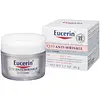What's inside
What's inside
 Key Ingredients
Key Ingredients

 Benefits
Benefits

 Concerns
Concerns

No concerns
 Ingredients Side-by-side
Ingredients Side-by-side

Water
Skin ConditioningButylene Glycol
HumectantGlycerin
HumectantSorbitol
HumectantPentylene Glycol
Skin ConditioningPhenoxyethanol
PreservativeUbiquinone
AntioxidantAcetyl Glucosamine
Skin ConditioningSerine
MaskingSodium Citrate
BufferingElaeis Guineensis Oil
EmollientCaprylic/Capric Triglyceride
MaskingPolyglyceryl-10 Oleate
Skin ConditioningPolyglyceryl-10 Stearate
Skin ConditioningDipotassium Glycyrrhizate
HumectantLysolecithin
EmulsifyingAllantoin
Skin ConditioningCitric Acid
BufferingMagnesium Ascorbyl Phosphate
AntioxidantSodium Hyaluronate
HumectantCarboxymethyl Chitosan Succinamide
HumectantSoluble Collagen
HumectantHydrogenated Lecithin
EmulsifyingPlacental Protein
HumectantPEG-60 Hydrogenated Castor Oil
EmulsifyingTocopheryl Acetate
AntioxidantWater, Butylene Glycol, Glycerin, Sorbitol, Pentylene Glycol, Phenoxyethanol, Ubiquinone, Acetyl Glucosamine, Serine, Sodium Citrate, Elaeis Guineensis Oil, Caprylic/Capric Triglyceride, Polyglyceryl-10 Oleate, Polyglyceryl-10 Stearate, Dipotassium Glycyrrhizate, Lysolecithin, Allantoin, Citric Acid, Magnesium Ascorbyl Phosphate, Sodium Hyaluronate, Carboxymethyl Chitosan Succinamide, Soluble Collagen, Hydrogenated Lecithin, Placental Protein, PEG-60 Hydrogenated Castor Oil, Tocopheryl Acetate
Ethylhexyl Methoxycinnamate 7.5%
UV AbsorberEthylhexyl Salicylate 3%
UV AbsorberBenzophenone-3 3%
UV AbsorberWater
Skin ConditioningGlycerin
HumectantCyclomethicone
EmollientCetyl Alcohol
EmollientMethylpropanediol
SolventAlcohol Denat.
AntimicrobialCetearyl Isononanoate
EmollientGlyceryl Stearate Se
EmulsifyingPalmitic Acid
EmollientStearic Acid
CleansingUbiquinone
AntioxidantPanthenol
Skin ConditioningTocopheryl Acetate
AntioxidantCaprylic/Capric Triglyceride
MaskingOctyldodecanol
EmollientPhenoxyethanol
PreservativeEthylhexylglycerin
Skin ConditioningPiroctone Olamine
PreservativeCarbomer
Emulsion StabilisingSodium Hydroxide
BufferingDisodium EDTA
Ethylhexyl Methoxycinnamate 7.5%, Ethylhexyl Salicylate 3%, Benzophenone-3 3%, Water, Glycerin, Cyclomethicone, Cetyl Alcohol, Methylpropanediol, Alcohol Denat., Cetearyl Isononanoate, Glyceryl Stearate Se, Palmitic Acid, Stearic Acid, Ubiquinone, Panthenol, Tocopheryl Acetate, Caprylic/Capric Triglyceride, Octyldodecanol, Phenoxyethanol, Ethylhexylglycerin, Piroctone Olamine, Carbomer, Sodium Hydroxide, Disodium EDTA
Ingredients Explained
These ingredients are found in both products.
Ingredients higher up in an ingredient list are typically present in a larger amount.
This ingredient is an emollient, solvent, and texture enhancer. It is considered a skin-softener by helping the skin prevent moisture loss.
It helps thicken a product's formula and makes it easier to spread by dissolving clumping compounds.
Caprylic Triglyceride is made by combining glycerin with coconut oil, forming a clear liquid.
While there is an assumption Caprylic Triglyceride can clog pores due to it being derived from coconut oil, there is no research supporting this.
Learn more about Caprylic/Capric TriglycerideGlycerin is already naturally found in your skin. It helps moisturize and protect your skin.
A study from 2016 found glycerin to be more effective as a humectant than AHAs and hyaluronic acid.
As a humectant, it helps the skin stay hydrated by pulling moisture to your skin. The low molecular weight of glycerin allows it to pull moisture into the deeper layers of your skin.
Hydrated skin improves your skin barrier; Your skin barrier helps protect against irritants and bacteria.
Glycerin has also been found to have antimicrobial and antiviral properties. Due to these properties, glycerin is often used in wound and burn treatments.
In cosmetics, glycerin is usually derived from plants such as soybean or palm. However, it can also be sourced from animals, such as tallow or animal fat.
This ingredient is organic, colorless, odorless, and non-toxic.
Glycerin is the name for this ingredient in American English. British English uses Glycerol/Glycerine.
Learn more about GlycerinPhenoxyethanol is a preservative that has germicide, antimicrobial, and aromatic properties. Studies show that phenoxyethanol can prevent microbial growth. By itself, it has a scent that is similar to that of a rose.
It's often used in formulations along with Caprylyl Glycol to preserve the shelf life of products.
Tocopheryl Acetate is AKA Vitamin E. It is an antioxidant and protects your skin from free radicals. Free radicals damage the skin by breaking down collagen.
One study found using Tocopheryl Acetate with Vitamin C decreased the number of sunburned cells.
Tocopheryl Acetate is commonly found in both skincare and dietary supplements.
Learn more about Tocopheryl AcetateUbiquinone (Coenzyme Q10) is a molecule already found in our bodies. It is a potent antioxidant and skin-soothing ingredient.
Aging and environmental exposure diminishes our skin's natural ubiquinone levels. This is much like our natural collagen and elastin.
The good news is: studies show applying this ingredient topically replenishes ubiquinone levels in our skin. This also comes with a ton of skin benefits. These benefits include:
Ubiquinone is considered a large molecule and cannot be absorbed into the lower layers of skin. This is why it is believed to be such an effective antioxidant: it protects our skin in the upper layers and prevents damage in the deeper layers.
When used in sunscreen, ubiquinone is shown to increase ingredient stability, increase SPF factor, and add to infrared protection.
Fun fact: ubiquinone is fat-soluble.
Learn more about UbiquinoneWater. It's the most common cosmetic ingredient of all. You'll usually see it at the top of ingredient lists, meaning that it makes up the largest part of the product.
So why is it so popular? Water most often acts as a solvent - this means that it helps dissolve other ingredients into the formulation.
You'll also recognize water as that liquid we all need to stay alive. If you see this, drink a glass of water. Stay hydrated!
Learn more about Water